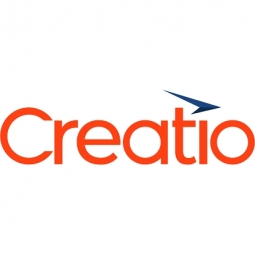Creatio

概述
|
总部
美国
|
成立年份
2014
|
公司类型
私营公司
|
收入
$100m-1b
|
|
员工人数
201 - 1,000
|
网站
|
推特句柄
|
公司介绍
Creatio 是一家全球无代码平台供应商,可最大程度地实现工作流程和 CRM 自动化。Creatio 产品包括无代码平台 (Studio Creatio)、CRM 应用程序(营销、销售和服务)、20 个垂直行业的行业工作流程和市场附加组件。它帮助客户数字化工作流程、增强客户和员工体验,并提高商业和运营团队的效率。
物联网应用简介
Creatio 是平台即服务 (paas), 网络与连接, 传感器, 应用基础设施与中间件, 分析与建模, 和 功能应用等工业物联网科技方面的供应商。同时致力于服装, 建筑物, 水泥, 建筑与基础设施, 消费品, 教育, 设备与机械, 金融与保险, 包装, 和 运输等行业。
技术栈
Creatio的技术栈描绘了Creatio在平台即服务 (paas), 网络与连接, 传感器, 应用基础设施与中间件, 分析与建模, 和 功能应用等物联网技术方面的实践。
-
设备层
-
边缘层
-
云层
-
应用层
-
配套技术
技术能力:
无
弱
中等
强

Supplier missing?
Start adding your own!
Register with your work email and create a new supplier profile for your business.
实例探究.
Case Study
OTP Bank's Digital Transformation with Creatio’s Low-Code Platform
OTP Bank Romania, a subsidiary of OTP Group, one of the largest financial groups in Central and Eastern Europe, was facing challenges in scaling customer onboarding due to manual processes and disjointed technologies. The bank was committed to providing exceptional customer experiences and wanted to stay close to its customers, understanding them, and proactively responding to their shifting expectations. However, the limitations in their existing system were hindering their growth and customer service. The bank was in search of innovative ways to manage operations and improve customer service through various banking services. The ultimate goal was to accelerate market growth by reimagining its IT infrastructure and making the customer experience the starting point for workflow designs.
Case Study
Israeli Government Enhances Infrastructure Project Coordination with Creatio’s No-Code Platform
Israel is currently undergoing the largest infrastructure development in its history, with projects ranging from lite-trains and underground trains to cross-country highways and heavy railways. However, coordinating these large-scale projects in a small country like Israel, where resources are limited, is a significant challenge. Each project requires multiple approvals from various entities, including the Israel Water Company, the Israel Electric Corporation, and several federal bodies. This process was previously handled manually, leading to inefficient paperwork, misunderstandings, and delays in the coordination process, which in turn delayed project delivery. The Israeli government recognized the need for a more efficient system to manage the coordination of these infrastructure projects.
Case Study
Asseco SEE Streamlines Sales Workflows with Creatio
Asseco SEE (ASEE), one of the largest IT service providers in South-Eastern Europe, was facing challenges with its outdated CRM solution. The legacy on-site solution was no longer able to support the required level of sales automation and operational efficiency. The company was also looking to establish a single market approach among multiple group companies with different cultural and technology backgrounds. This was particularly challenging due to the company's complex organizational structure, which consists of multiple business units across 23 countries. Each unit has its own profit center and users allocated to it. Additionally, ASEE also manages cross-unit sales, which added another layer of complexity to the situation. The company was in need of a flexible, advanced solution that could minimize development efforts, easily scale, and support its digital transformation journey.
Case Study
Vynova's Digital Transformation with Creatio's No-Code Platform
Vynova, a leading European PVC and chlor-alkali company, was grappling with a fragmented IT infrastructure that consisted of various disconnected solutions. This lack of integration resulted in an absence of end-to-end visibility of the customer journey, hindering the company's ability to provide a high-end customer experience. The company sought to connect its sales and marketing units and equip them with tools that would enhance both cross-departmental and customer interactions. Furthermore, the company was dealing with the challenge of managing multiple applications, which often resulted in fragmented or duplicated data. Vynova needed a solution that would ensure data alignment and facilitate large-scale process automation and harmonization.
Case Study
Blueprint Automation Enhances Sales and Marketing with No-Code CRM
BluePrint Automation (BPA), a global leader in end-of-line packaging automation, was facing challenges with its sales and marketing operations. The company was relying on Excel spreadsheets for data storage and email for lead tracking, which was not only inefficient but also led to unsatisfactory outcomes. The lack of a centralized customer data system was hindering effective customer interactions and relationship building. Manual data entry was consuming more working hours than the actual selling process. BPA, which primarily uses a relationship-based selling approach, realized the need to rethink its operations. The company aimed to reduce human error, optimize customer communication, and automate all stages of the buyer’s journey.
Case Study
School Populo Doubles Lead Conversion Rate with Creatio’s No-code Platform
School Populo, a private school offering professional online and offline tutoring services, was facing challenges with its manual processes. The school was managing payments via Excel and storing customer data in spreadsheets. However, as the school grew, this approach was no longer practical or sustainable. The school was dealing with a vast amount of data, numerous student applications from various sources, and complex learning schedules. These required automation and coordination. The school needed a solution that would support its ambitious growth aspirations. Therefore, the school prioritized system flexibility and scalability during the vendor selection process.
Case Study
Upward Sports: Leveraging Creatio for Enhanced Partnership and Growth
Upward Sports, the world's largest Christian sports league, was facing challenges with its outdated, complex, and code-based CRM solution. The organization, which partners with churches across the U.S. and Canada to bring youth sports ministry to local communities, was struggling with a CRM system that was difficult to operate and required a significant amount of time for process automation. The system was only operable by a limited number of employees, which further complicated matters. The need for a more advanced solution was also driven by the company's desire to improve its time to market.



